Many forest mushrooms love to grow near or on a birch. This is due to the fact that it is with this tree that the mushrooms form a strong mycorrhiza and the conditions for growth are suitable for them. Birch is often used as a guideline in the search, and birch groves are teeming with mushrooms. Experienced mushroom pickers advise, despite everything, to look closely at the mushrooms, since poisonous species also grow near birches, which can provoke severe intoxication of the body.
Content
Healing birch mushroom Chaga
A sexless form of tinder fungus is called Chaga. Also, the mushroom is called birch black mushroom, as it grows on the trunks of birches. The fruit does not have clearly defined parts and has a gray color with a brown tint. This species is considered a parasite, since it enters the trunk cracks in the form of spores and subsequently parasitizes on it.
The inside of the fruit is brown in color with a red tint. The weight of one fruit part can reach 3 kg. Collect it at any time of the year only from healthy living trees. After that, the fruit is dried, cut into pieces and put into jars.
In cooking, the mushroom is not used, but it is widespread in folk medicine. So, it is used to treat cancer, reduce blood cholesterol, normalize the digestive tract, restore the central nervous system, improve immunity and treat inflammatory processes of the skin.
Such a wide spectrum of action is associated with the presence of a large number of nutrients, minerals and vitamins in the composition. To use Chaga, decoctions and tinctures are prepared from it by boiling the fruit.
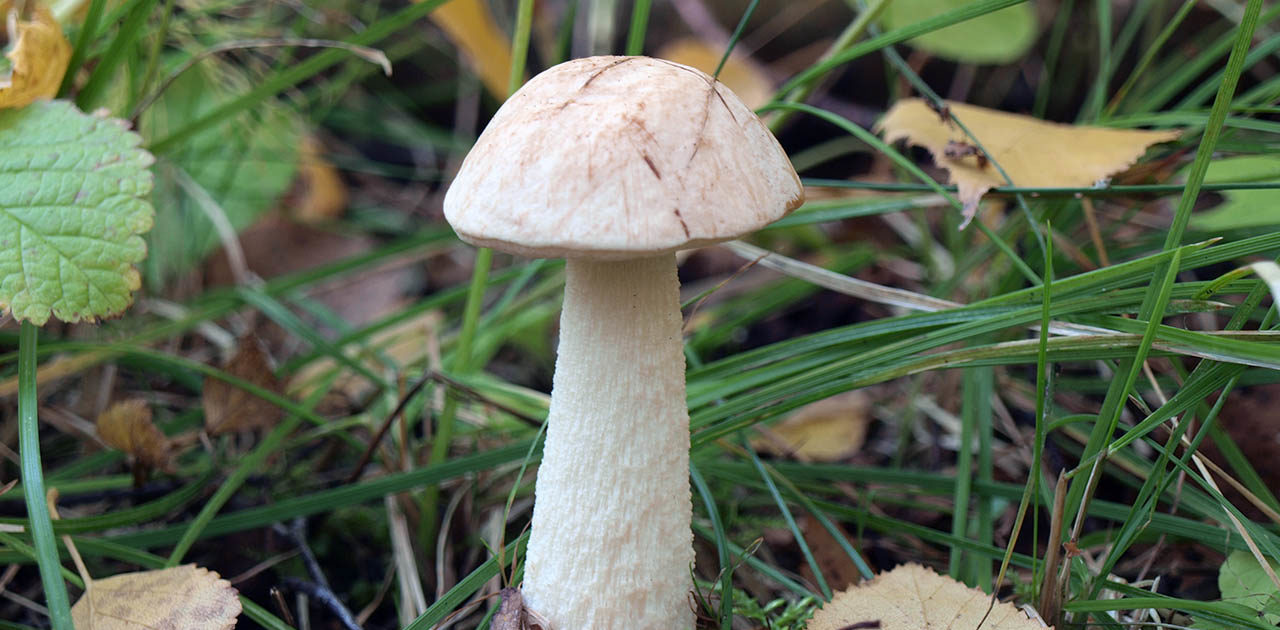 You may be interested in:
You may be interested in:Edible Mushrooms Growing on a Birch
In addition to Chaga, there are many birch mushrooms that also grow directly on the trunk. Oyster mushrooms and honey mushrooms, which are often used in cooking for preparing various dishes, are widely known. Among oyster mushrooms there are no inedible and poisonous species, but the photo and description of the honey agaric, for example, need to be studied carefully to be able to distinguish it from false.
Oyster mushroom
Oyster mushrooms got their name because fruit bodies hang from the birch trunks. They are not only tasty, but also healthy, because they are often used by housewives to prepare different dishes. There are many varieties of oyster mushrooms, and the most popular are ordinary, carob, pulmonary and orange.
Oyster mushroom, ordinary or oyster, is a large mushroom, the diameter of the hat reaches 30 cm. It is conch-shaped in shape, with edges directed inward and a smooth surface. Later it becomes flat.
The color is changeable, it can be dark gray with a brown tint, ashen with a light violet tint. The leg is short, curved, light. The pulp of the fruit part is light and soft, and with age it becomes harder. You can meet ordinary oyster mushroom from the beginning of autumn to the beginning of winter.
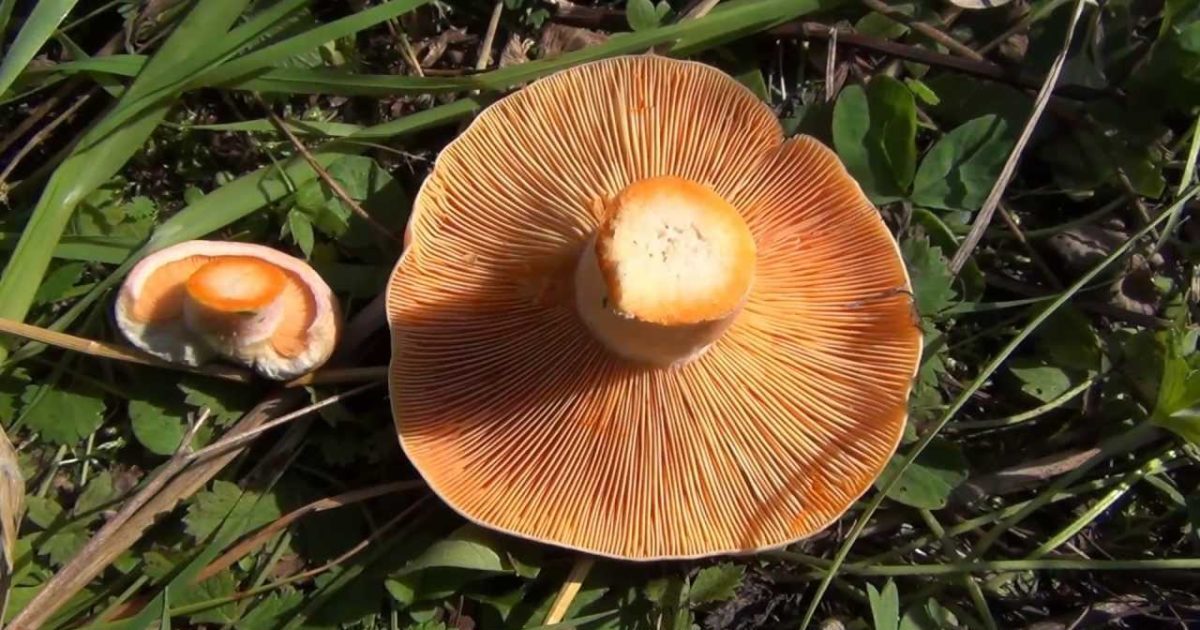 You may be interested in:
You may be interested in: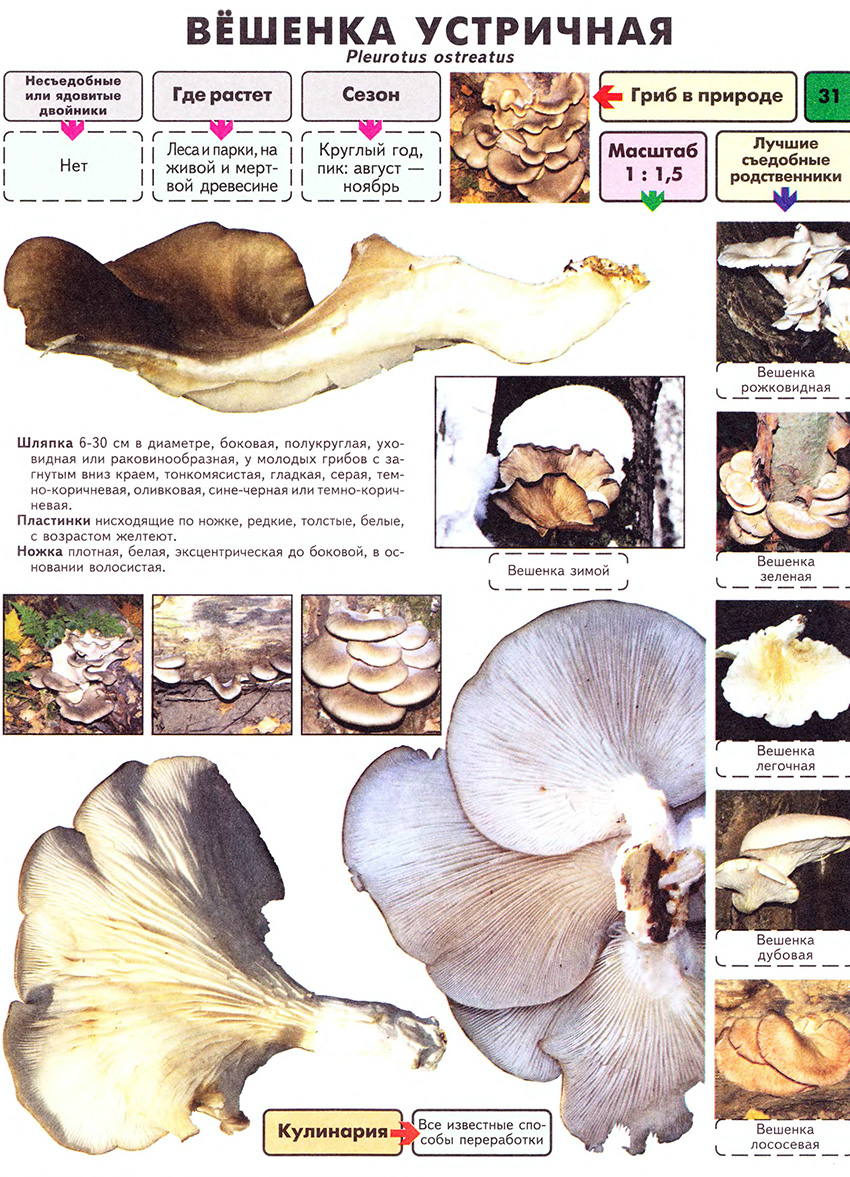
The horn-shaped oyster mushroom differs from the previous one in that it has a smaller hat and a funnel-shaped cap. The color is almost always light, with a grayish tint. The pulp is white and fleshy, odorless and tasteless.
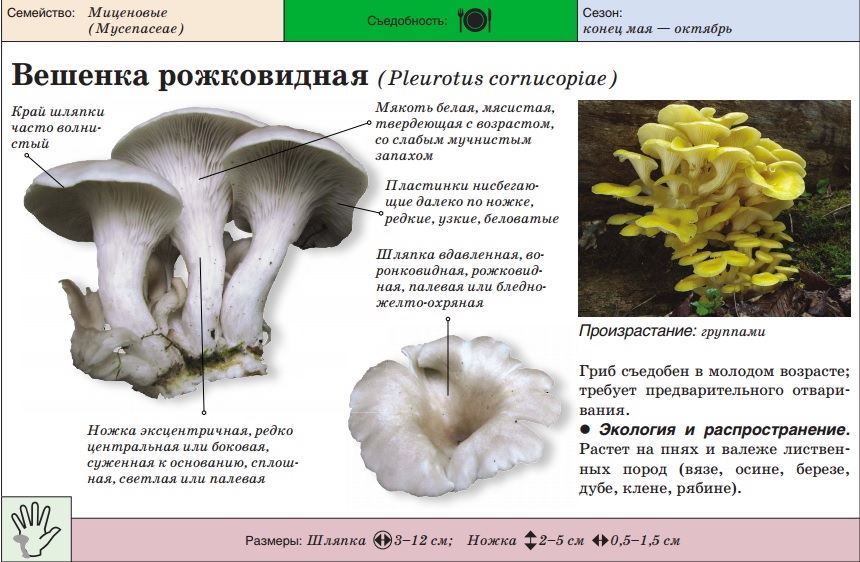
Pulmonary oyster mushroom has a thin tongue-shaped hat, with cracked edges, beige, the diameter of which reaches 8-9 cm. The lamellar part is descending. The pulp is always thin and elastic. The leg is almost invisible, it has a slight pubescence.
A distinctive feature of oyster mushroom orange is the bright orange color of its fruit part. The hat grows to the tree side part, because most often it has an irregular shape with wavy edges. The surface of the cap is downy.
In this variety, the leg is completely absent, and the plates are large, wide, and orange. Taste and smell weak putrid. The mushroom is considered inedible due to the fact that it is quite solid and has a specific taste and smell. Despite this, young fruits are still consumed.
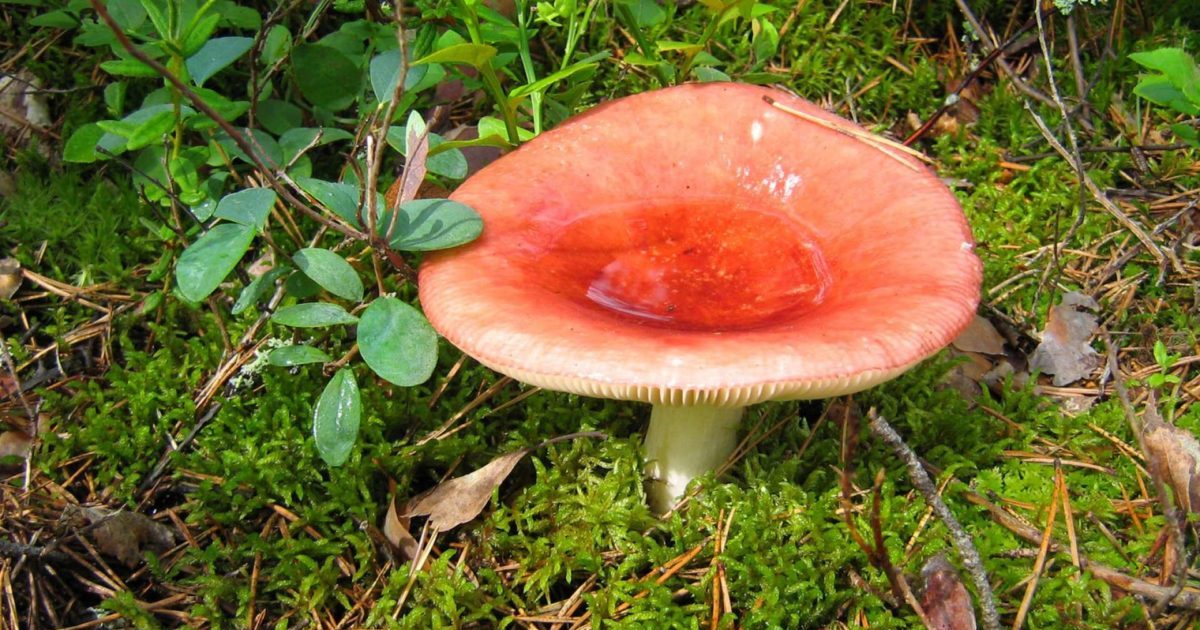 You may be interested in:
You may be interested in:Edible mushrooms
Honey mushrooms are no less common. They are often used in cooking and appreciated for their palatability. They are divided into summer, autumn and winter, depending on the peak yield.
Summer mushrooms have a thin hat with inwardly turned edges, which straighten with age. The hat is painted yellow with a brown tint. The diameter of the cap does not exceed 8 cm, and centric water circles may appear over its entire surface. Over time, circles disappear.
On the inside of the cap there is a plate system, which takes on a darker shade with time. The leg is tall, brown and thin, has a ring and, located below it, scales. You can meet summer mushrooms from July until the first snow.
Autumn mushrooms are distinguished by a flat hat with wavy edges, painted in green-brown color. The pulp of autumn mushrooms is soft, dense and white. The leg is high, expanded at the base, covered with scales. You can meet autumn mushrooms from the end of August to the end of autumn.
Winter mushrooms can not be confused with anything, since the surface of their hats is glossy, light brown in color with a reddish tinge. It is convex in shape. The pulp is thin and hard, mostly white. The leg is cylindrical, 8 cm high, light brown in color. You can meet this variety from the onset of cold weather until the beginning of spring.
Mushrooms, most often growing under birch trees
As a rule, mushrooms harvested from birch have a high nutritional value. The most popular varieties are very “love” to be with her.
Boletus
The taste of boletus is not inferior to boletus in its taste. This variety is appreciated in cooking for its taste. Unlike boletus, its flesh darkens after heat treatment. Berezovik is similar to boletus not only in taste, but also in appearance. The fruit of the birch is average in size.
The hat has a semicircular shape, which flattenes over time. The color is first light brown with a yellowish tinge that turns into brown. The surface of the hat is velvety and pleasant to the touch, and in wet weather it is covered with a thin mucous membrane. The leg is barrel-shaped, covered with a small amount of gray scales. The pulp is beige with a light gray tint, loose, with a faint mushroom smell. You can meet boletus from mid-June to the end of September.
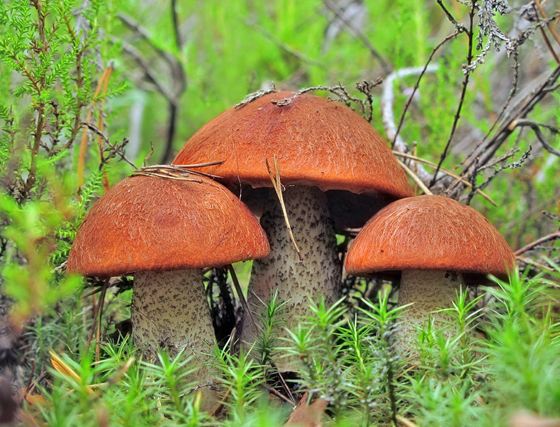 You may be interested in:
You may be interested in:White breast
White or real lint has long been used in cooking for salting, and when consumed fried or boiled. The mushroom cap is flat, but gradually becomes funnel-shaped, with a deep fossa in the center, about 25 cm in diameter.
The color of the hat is white, it is pleasant to the touch, sometimes covered with sticky skin. The edges are bent inward, they have a small amount of gun. The leg basically reaches 10 cm in height, and its central part is slightly wider than the rest. The flesh is white, secrete milk juice, which becomes yellowish after contact with air.
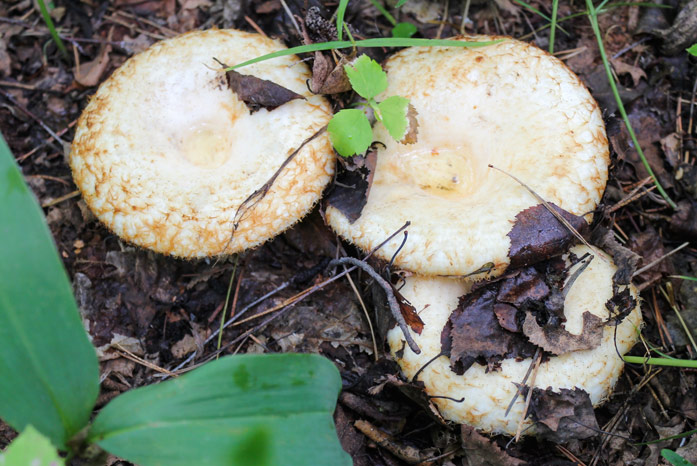
Porcini
The second name of this representative is boletus. Mushrooms are very common among mushroom pickers, they are very appreciated for their taste and relate to delicacies. Mushrooms are used in cooking, as well as grown at home. The fruit portion of the boletus is medium in size.
The hat is round in shape, with time it becomes more flat. The color of the hat is initially light brown, and in a mature mushroom it acquires a brown hue. The size of the cap can reach 30 cm, and in favorable climatic conditions - 50 cm.
The pulp is dense and juicy in consistency, it always retains white color, even after heat treatment, due to which the mushroom has gained its name. The foot is low, about 12 cm, barrel-shaped, narrowed at the base. Leg is mainly brown or beige. The peak yield of the mushroom occurs in mid-summer and lasts until October.
Russula is greenish
Russula green belongs to the family Russula. The peak yield of the variety occurs in early July and lasts until mid-autumn. The fruit portion is small. The leg has a cylindrical shape and white color with rare brown dots. The hat is semi-circular, has a greenish color, for which the mushroom got its name.
Over time, a small pit forms in the center of the cap. The surface of the cap is covered with a sticky shell, which is easily detachable. On the inside of the cap is a thick plate system. The pulp of the fruiting body has a beige color and a slightly bitter taste.
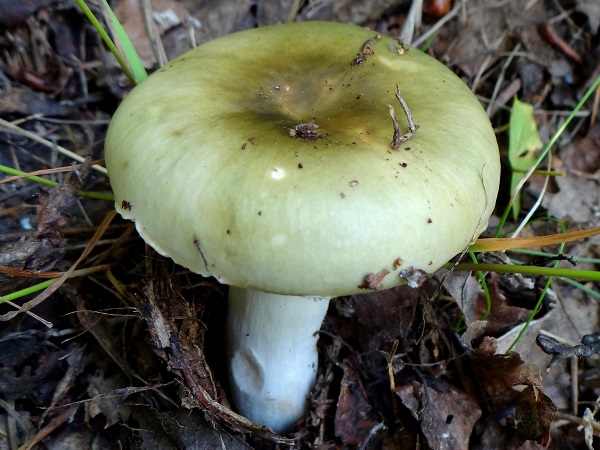
Russula greenish is used in cooking, and to eliminate the bitter aftertaste it is presoaked in water.
White top
White whiskers belong to the Mlechnik family and their peculiarity is that the flesh of the fungus secretes milk juice, which has a bitter taste. To get rid of bitterness, the mushroom is soaked before cooking. In cooking, thrills are often used, mainly for pickling and pickling.
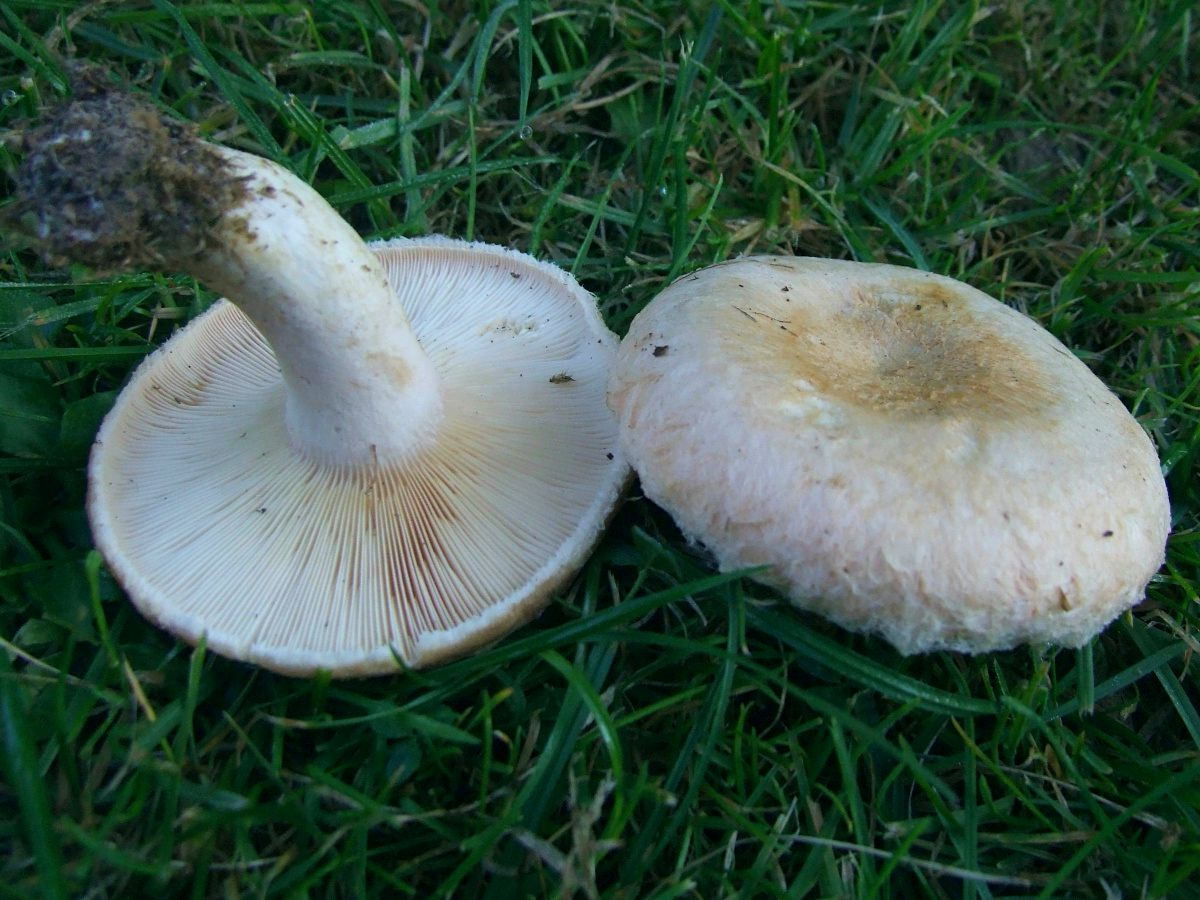
Another distinctive feature of the variety is the dense coating of the cap with light villi, especially its edges. The shape of the hat is flat in young organisms, while in mature it becomes funnel-shaped. The fruit body is white. The leg is not high, 4-8 cm. With age, the leg can become cellular. The waves are not fruitful for a long time - from the beginning of August to the end of September.
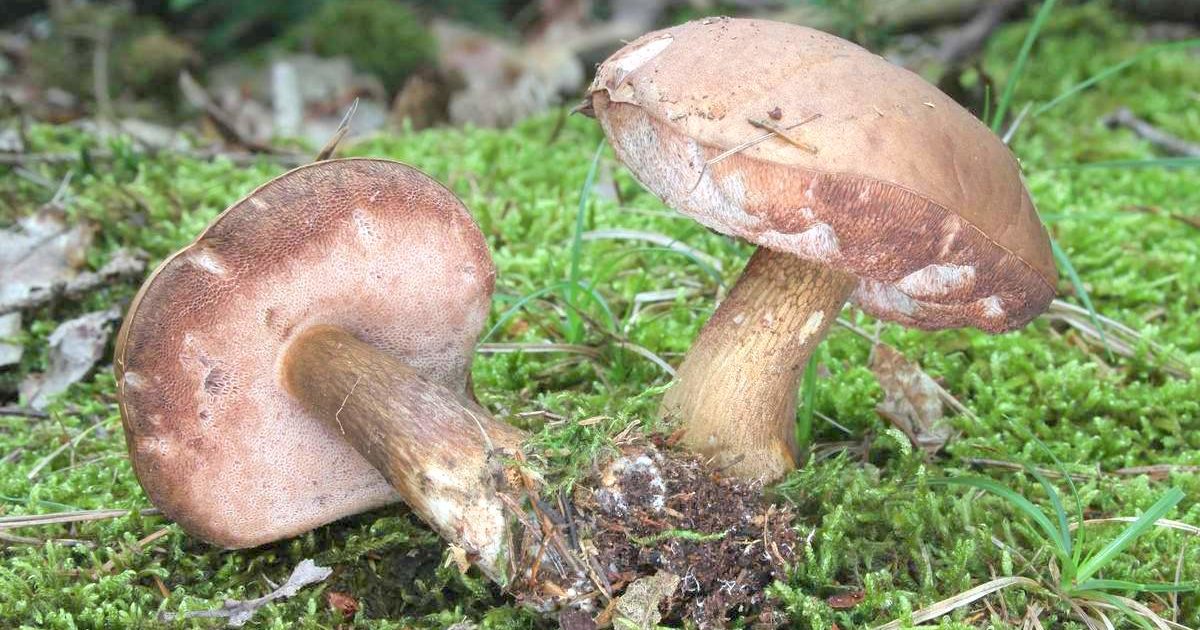 You may be interested in:
You may be interested in:Inedible species of mushrooms in birch groves
In addition to edible species, poisonous varieties of mushrooms are also frequent residents in birch groves.
Russula brittle
Russula brittle - this is a striking representative of the family Russula, which is often found in the forest. Domestic experts attribute the fungus to the conditionally edible type; in Western literature, Syroezhka refers to the inedible representatives of the forest. This is due to the fact that the pulp has a pungent smell and taste.
One cannot but pay attention to a hat of this type, since it has a bright purple color. It also has a convex shape.On the back of the cap there are rarely located plates that grow to the upper part of the stem. The leg itself is long, white, brittle in consistency. The lower part of the leg is expanded. This variety is found from the end of summer until the end of October.
Thin pig
A vivid representative of the sow family, which occurs from June to mid-autumn. The mushroom has a small cap size, which grows up to 12 cm in diameter. It is funnel-shaped in shape, with a fossa in the center and edges bent inward. The color of the hat is olive with a brown tint. In young fruits, the surface of the hat is roughened, while in mature ones it is smooth.
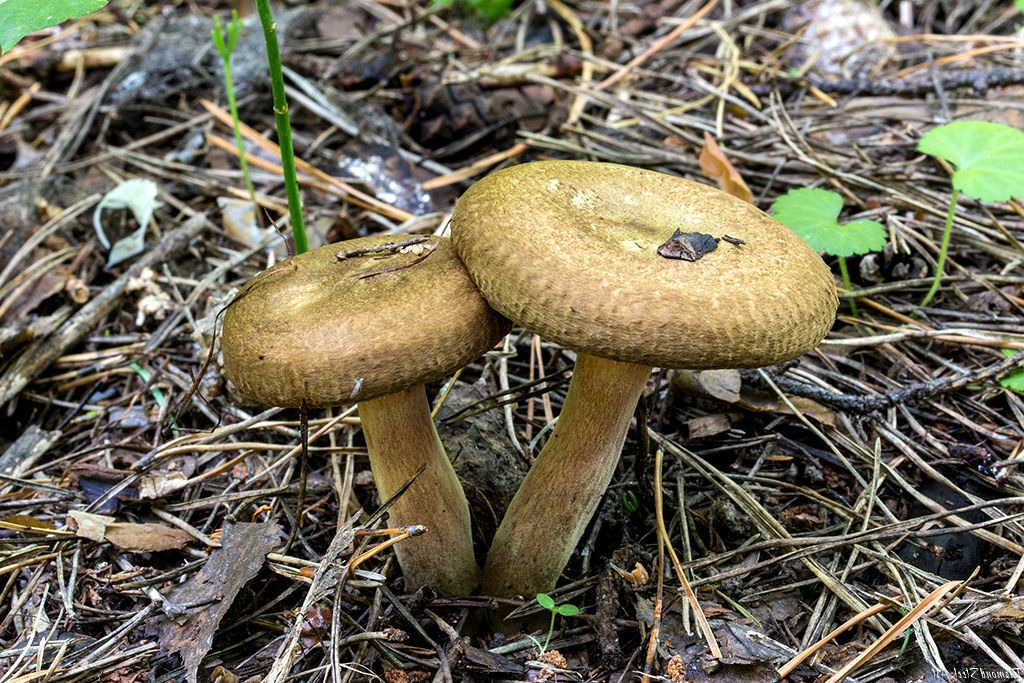
The pulp is soft and dense, pale yellow with a brown tint. After the cut, the flesh immediately darkens. Leg long, average 10 cm high, dirty yellow. After rain or during periods of high humidity, the surface of the fungus is covered with a slippery film.
Death cap
Pale toadstool is a well-known poisonous inhabitant of forests. Distinctive features are its pale yellow color of the cap and the presence of an ovoid seal on the lower part of the leg. A young mushroom begins to germinate in the form of a beige chicken egg, covered with a film. In a mature fruit body, the hat is convex, with a smooth surface of green or light olive color. Over time, it becomes grayish.
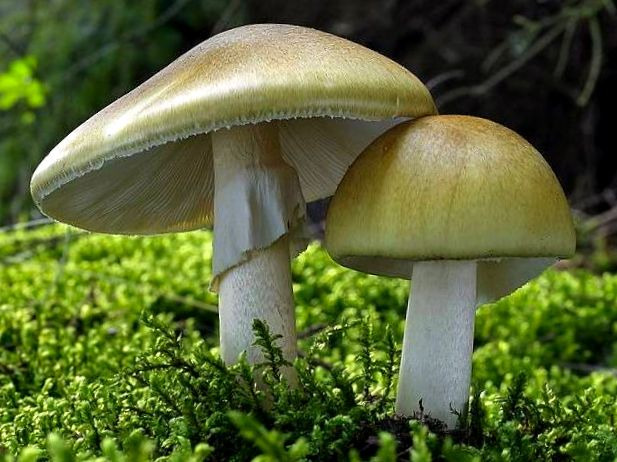
The pulp is white, odorless and tasteless. The leg is about 15 cm high and has a color, like a hat, sometimes covered with a moire pattern. On the back of the cap is a plate system. On the top of the leg there is a ring, fringed and wide, which disappears with age. This variety is often confused with russula or champignon mushrooms. The peak yield of grebes occurs in mid-summer and lasts until mid-autumn.
Satanic mushroom
The satanic mushroom belongs to the genus Borovikov and the Boletov family. The fruit body is large. The hat grows up to 25 cm in diameter, its shape is semicircular, with the edges bent inward. The color of the hat is mostly off-white, with a grayish tint, and maybe greenish. The flesh of the cap is white with a yellow tint, immediately after cutting it turns blue, later acquires a red color. The pulp of the legs has an unpleasant odor.
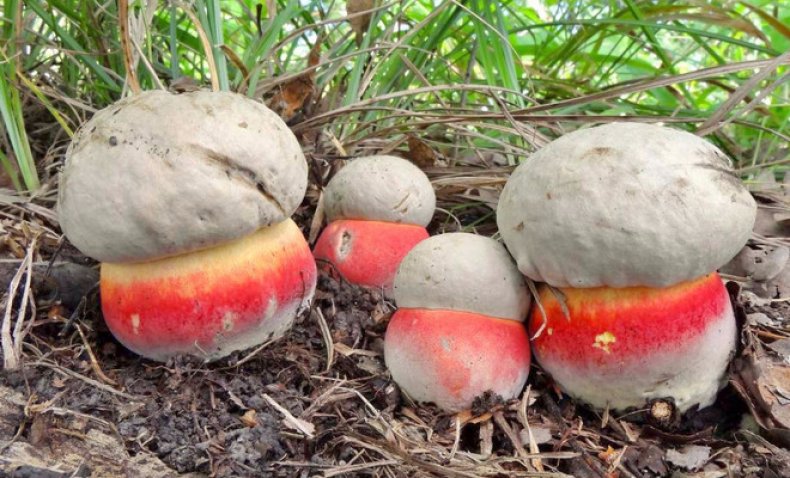
The tubular system is thick, with yellow tubes with a green tint. When pressed, they immediately turn blue. The leg is low, has the shape of a barrel. The upper part is colored red with a yellow tint, the middle is orange, and the lower is yellow with a brown tint. Also on the leg there is a mesh pattern in the form of ovoid large cells. Satanic mushroom grows from June to October.
Answers to widespread questions
There are a large number of edible species of mushrooms, the growth of which is associated with birch trees and which can be found in birch trees. But it is impossible to determine the edibility of mushrooms solely at the place of their growth, since poisonous and inedible representatives also "settle" under this tree. Therefore, caution and attention - this is what is needed first of all on a quiet hunt.

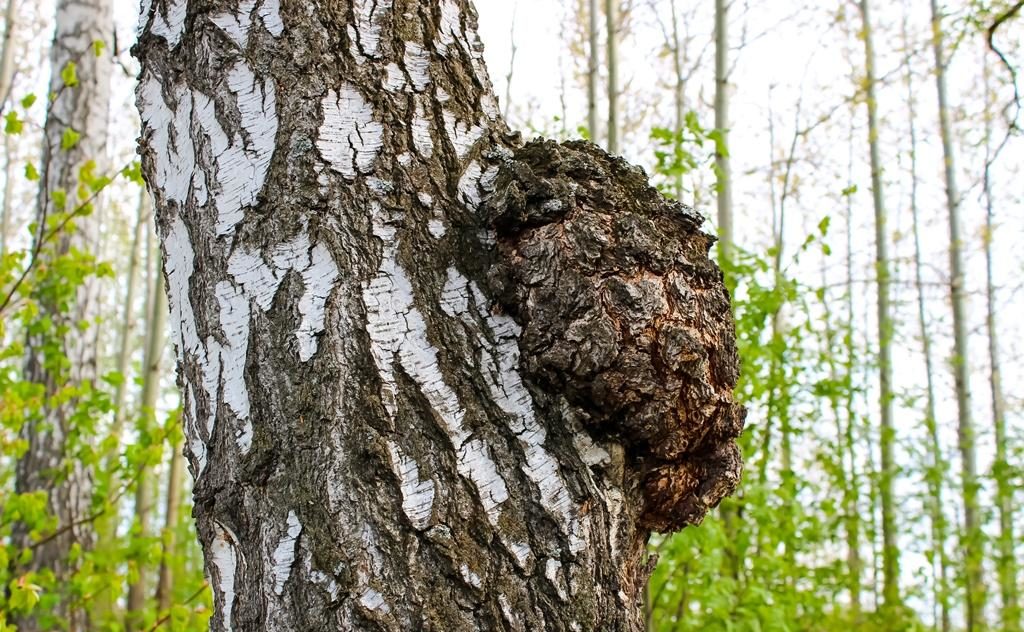
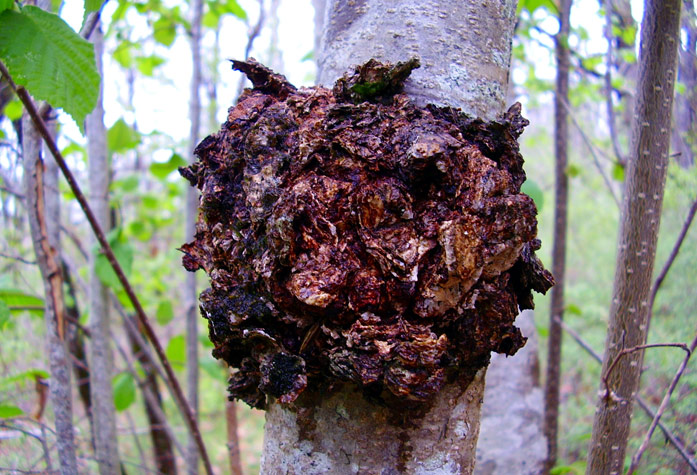
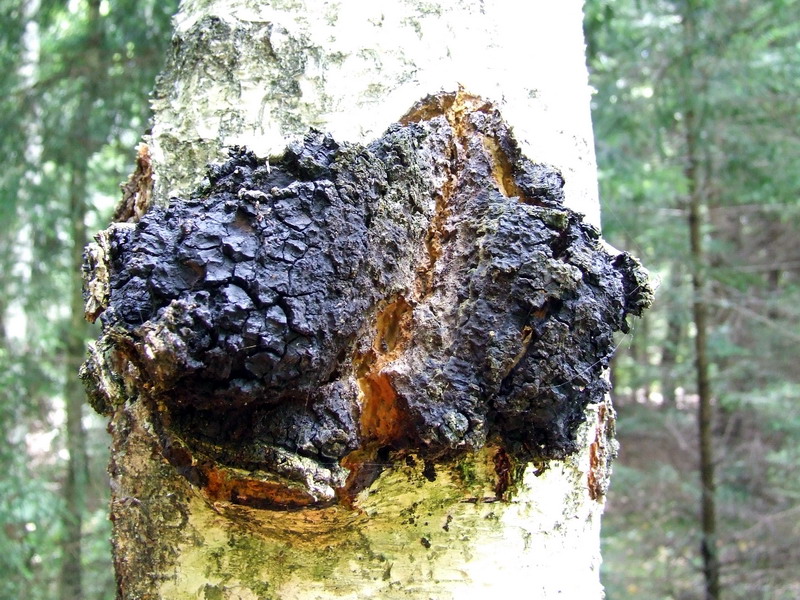
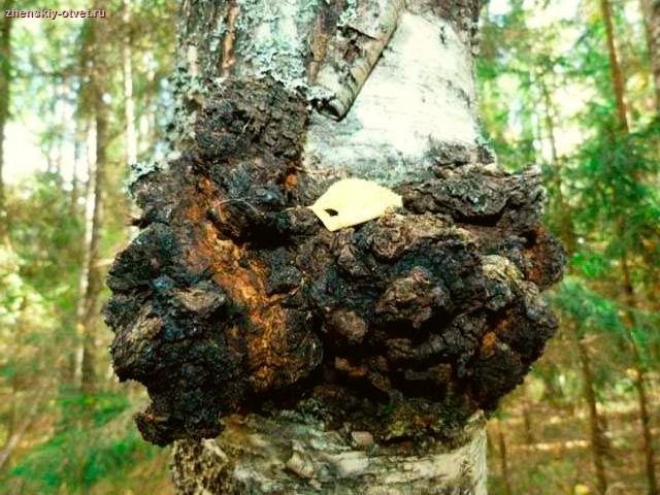
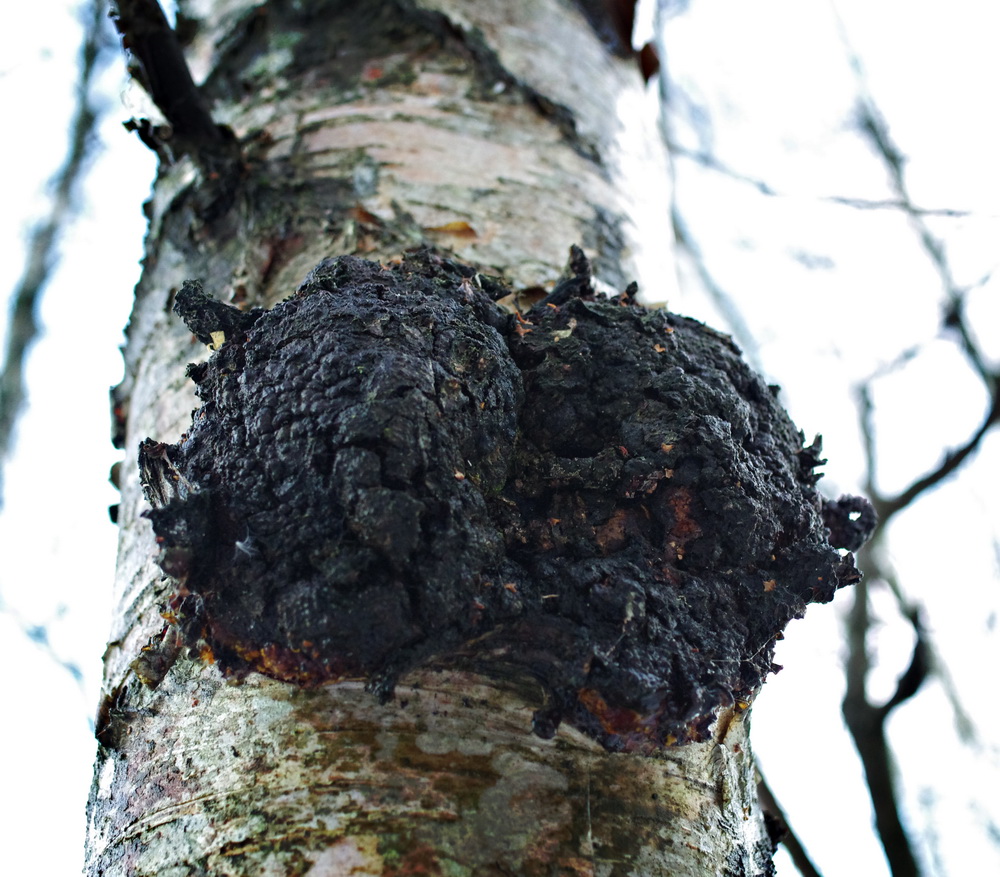
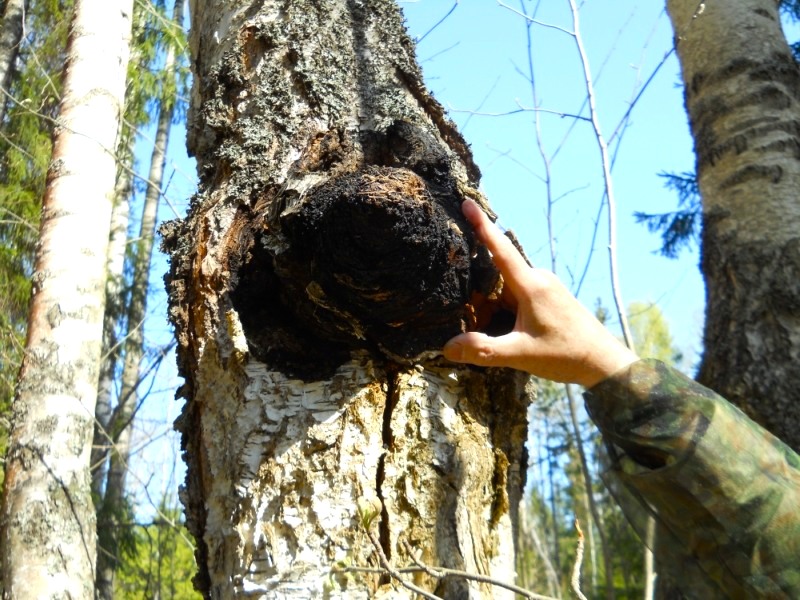
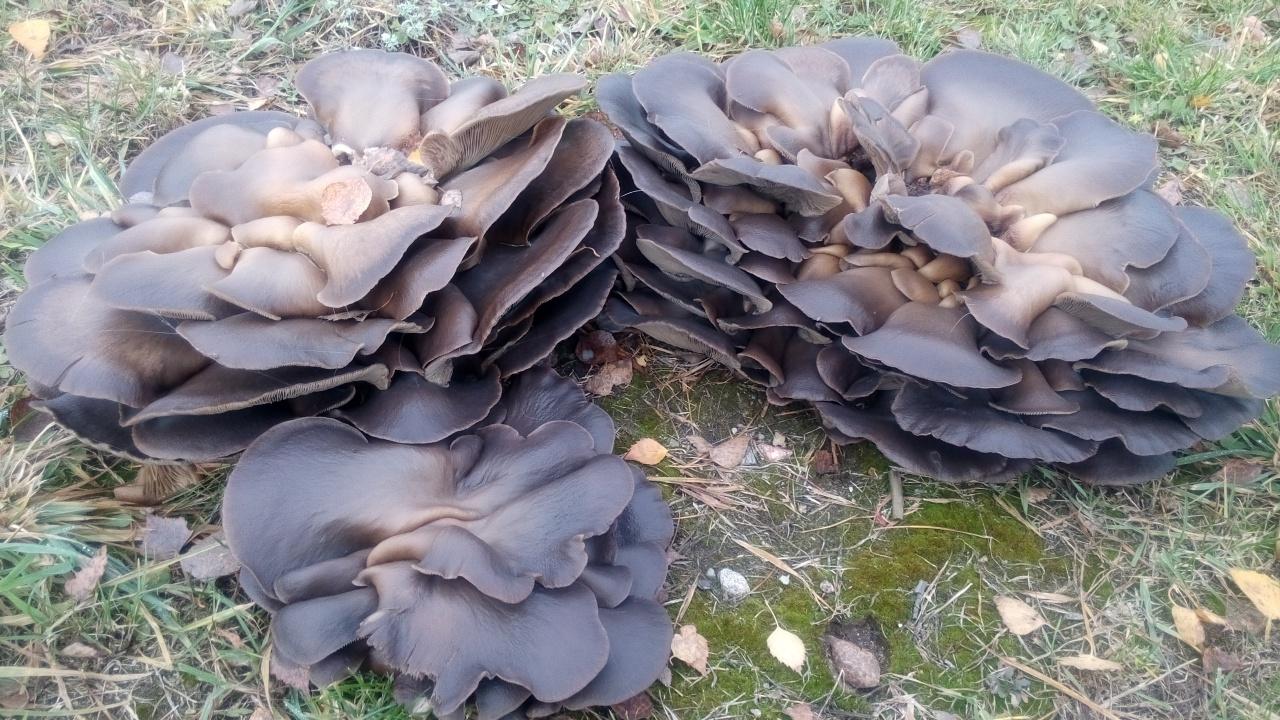
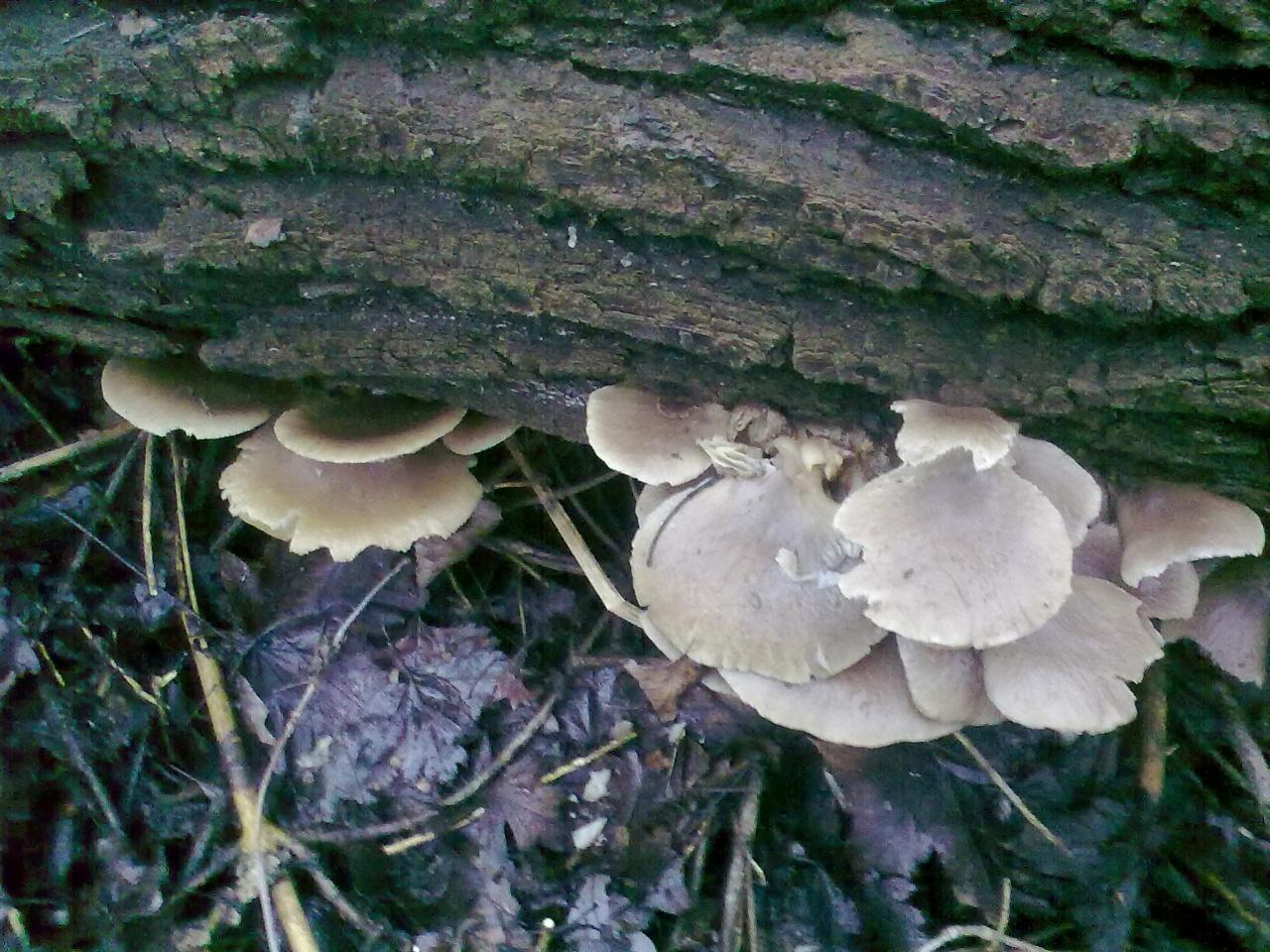
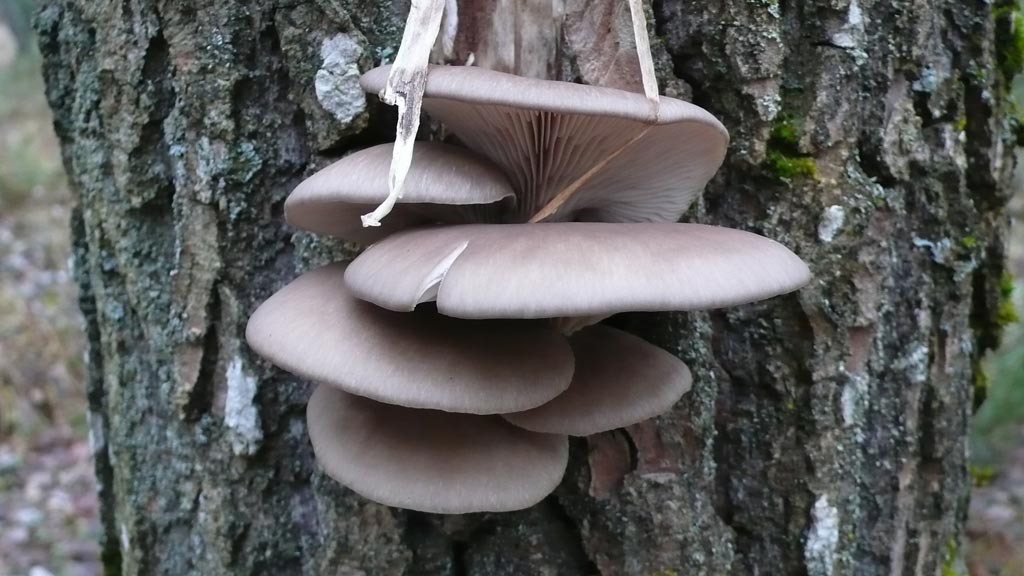
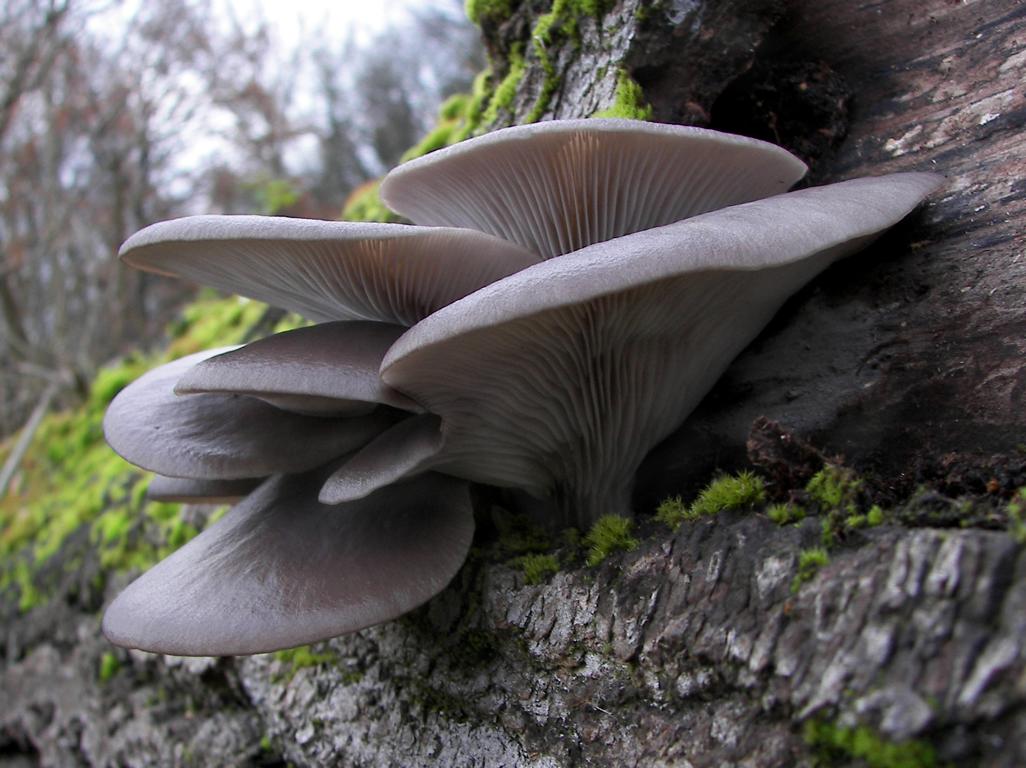
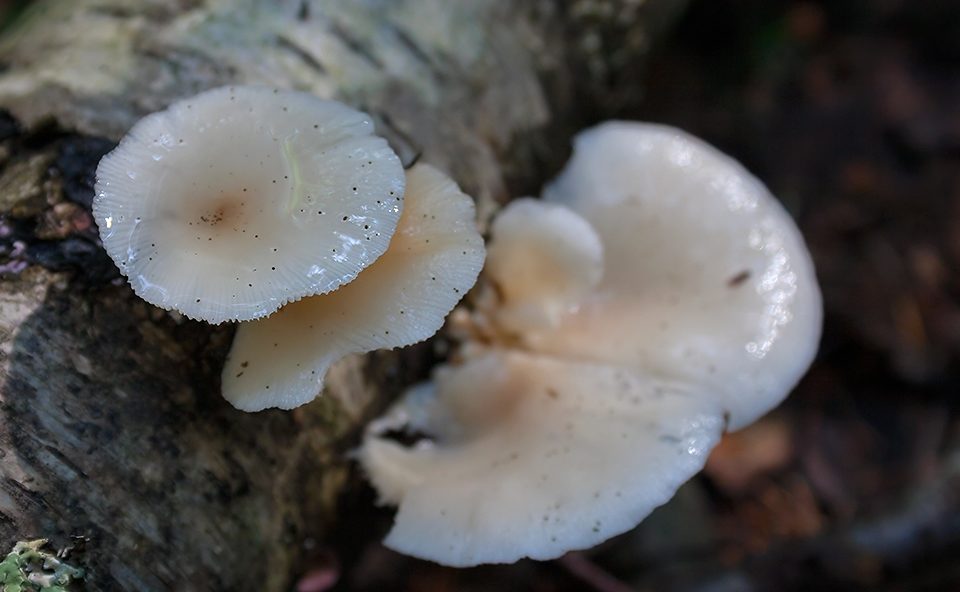
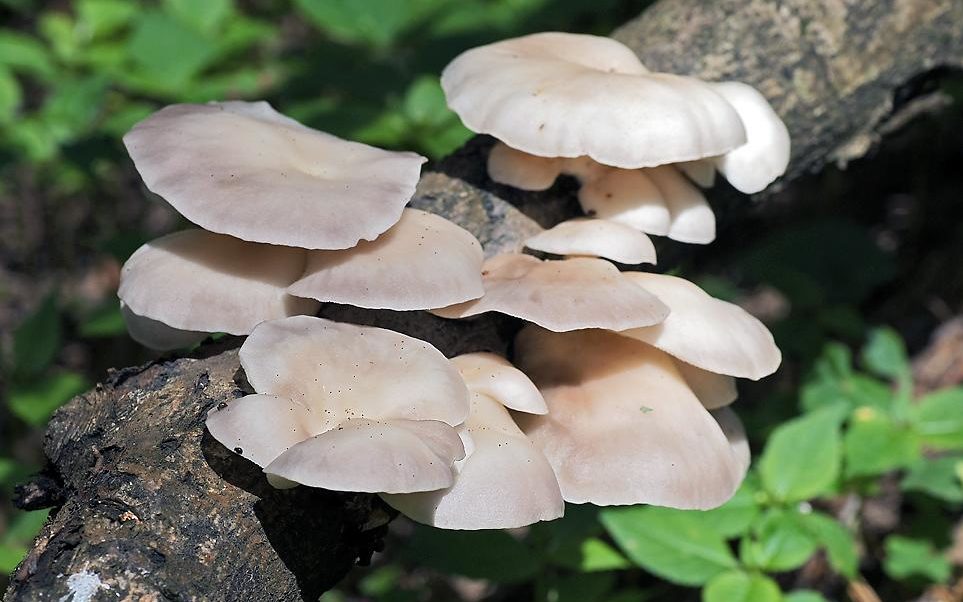
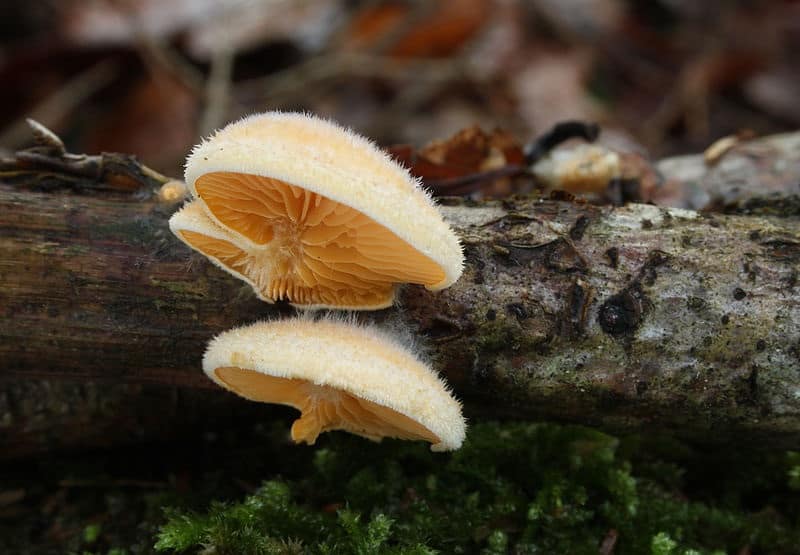
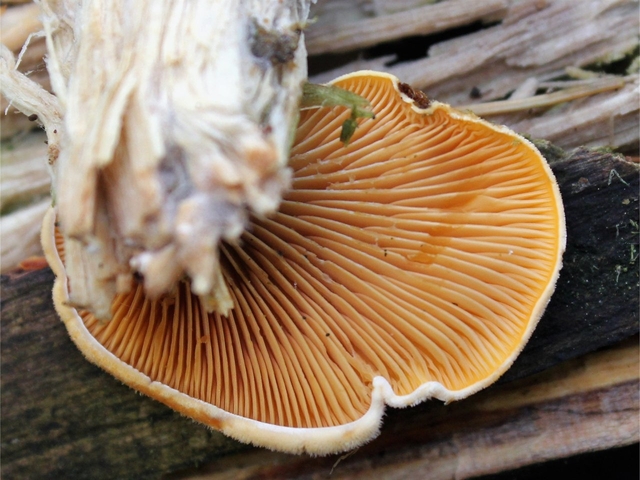
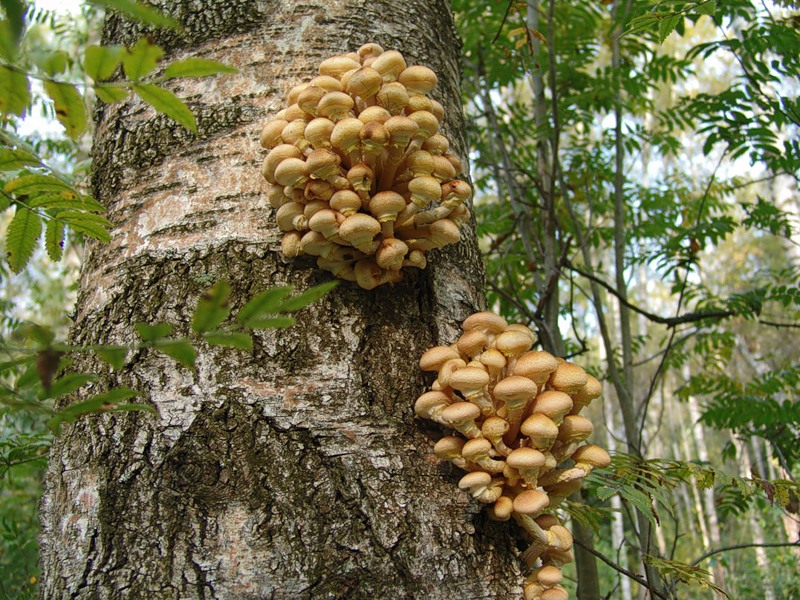

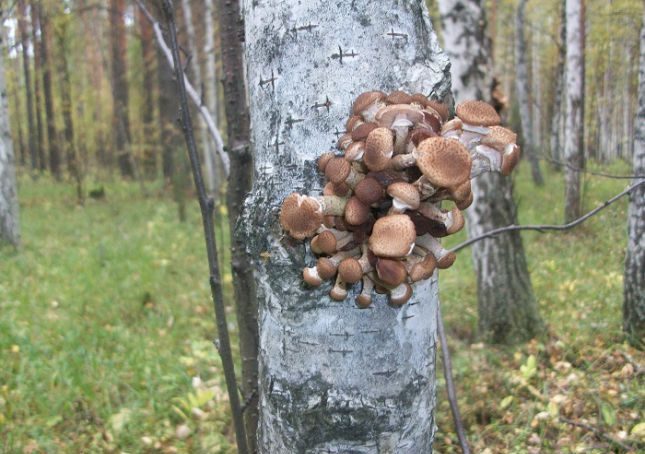
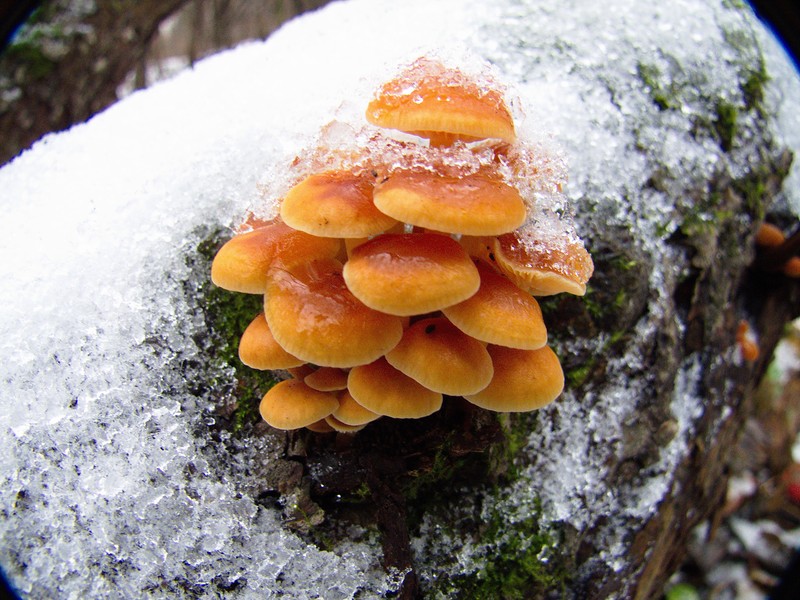
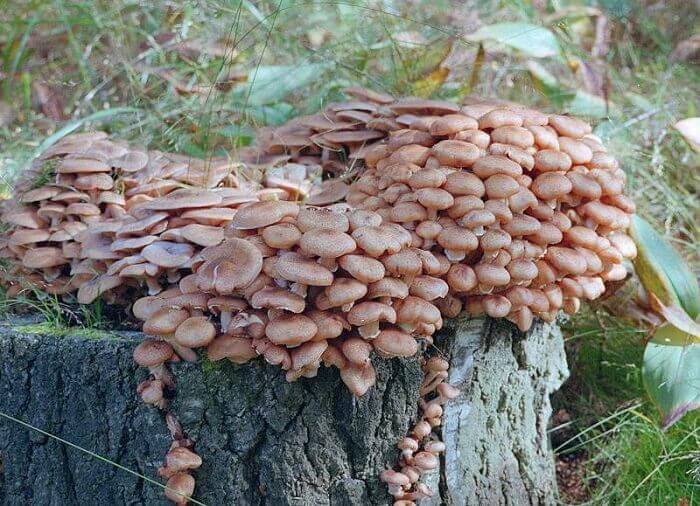
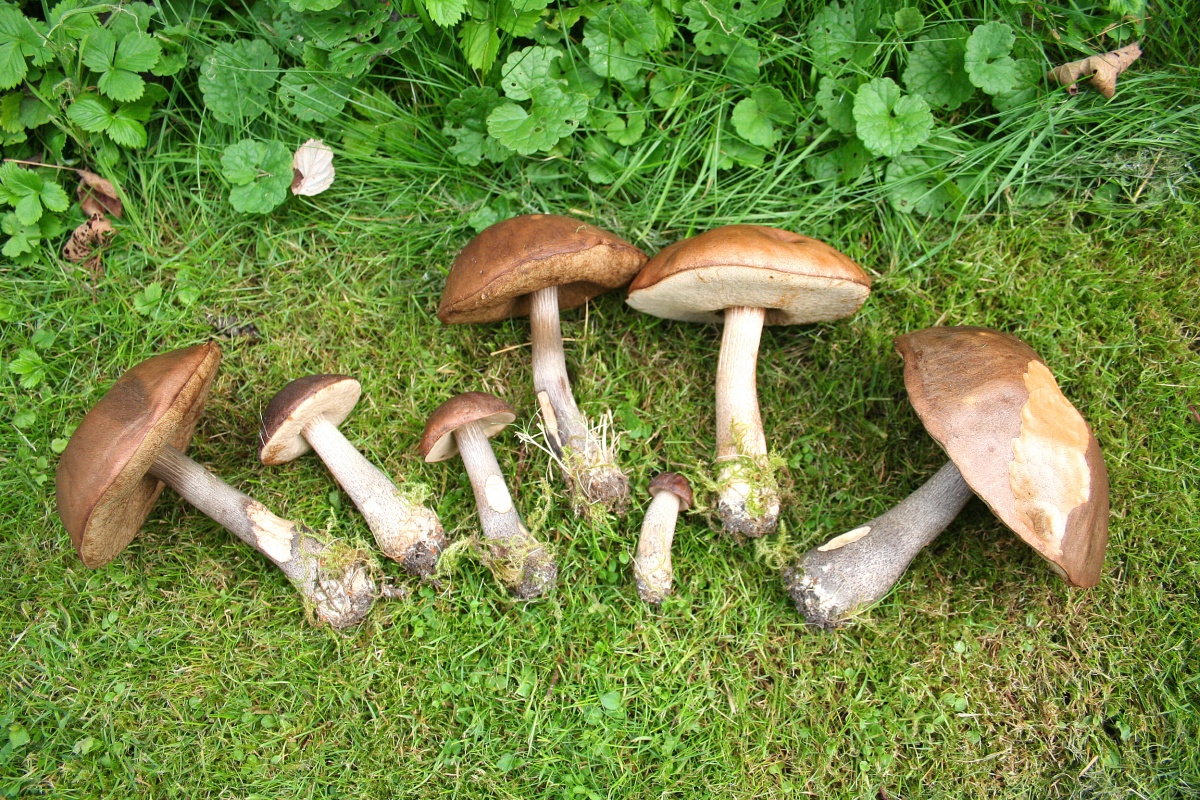
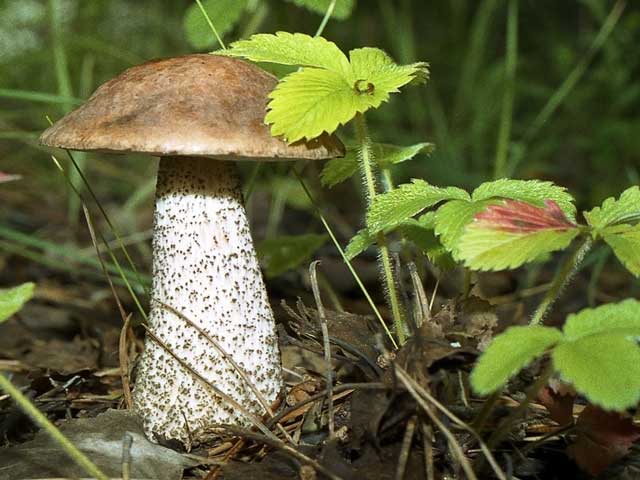
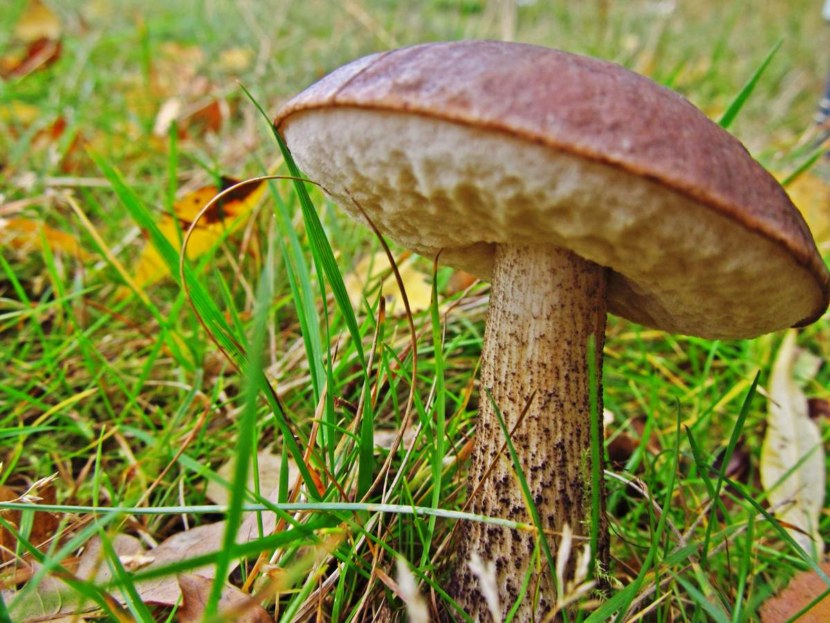



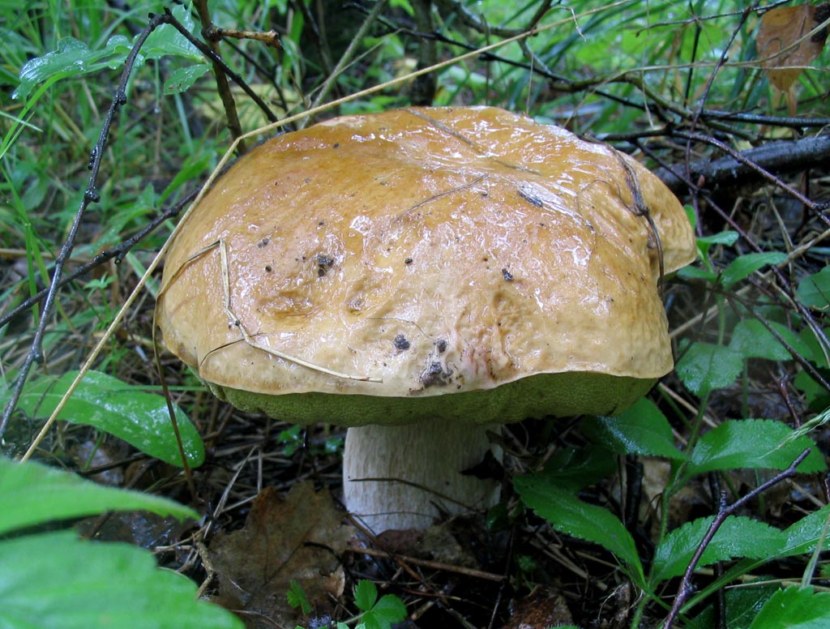
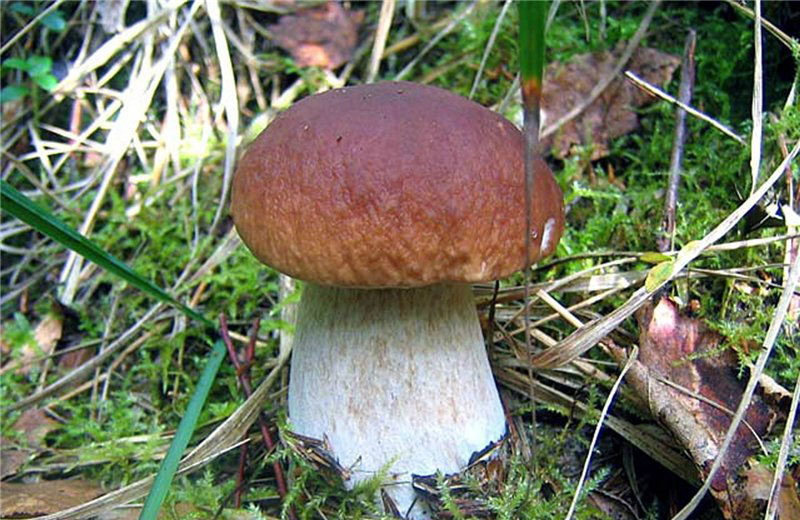
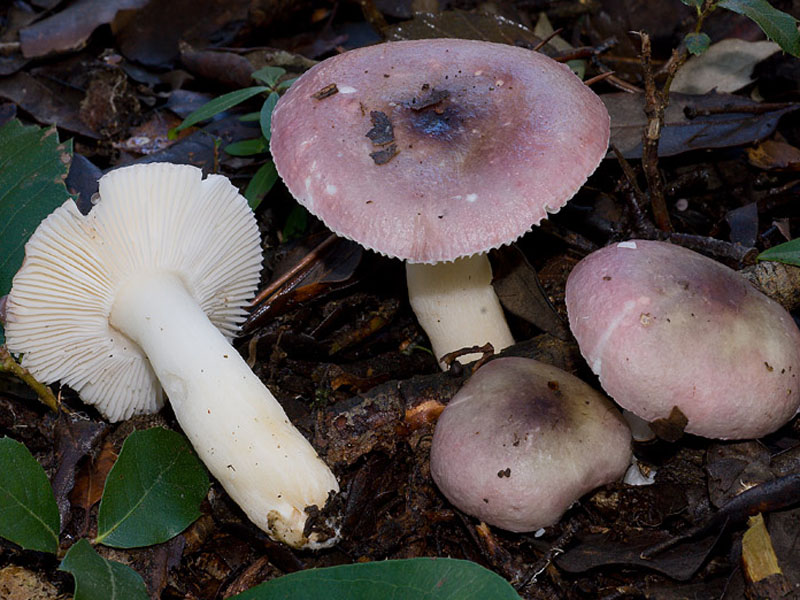
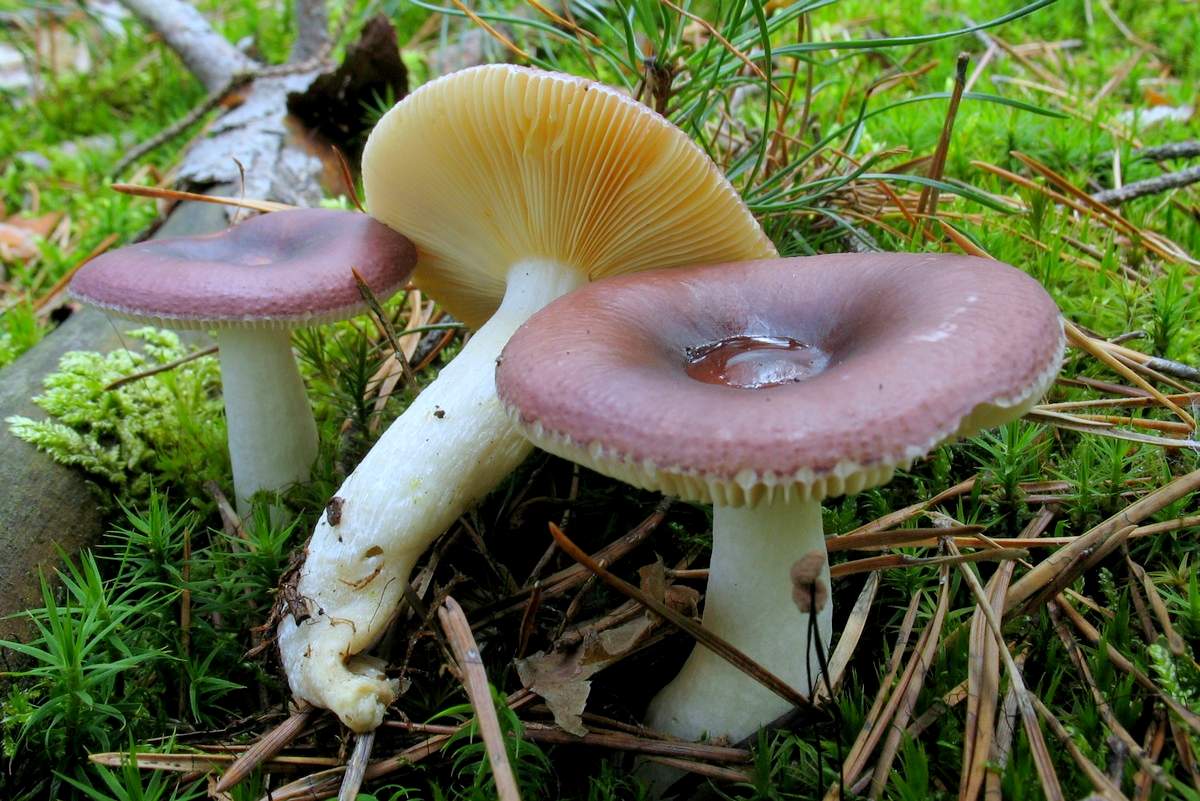
 Care and use of Kombucha at home (+22 photo)
Care and use of Kombucha at home (+22 photo) Edibility of the fungus of the motley umbrella and its description (+19 photo)
Edibility of the fungus of the motley umbrella and its description (+19 photo) Description of edible and inedible oils, their poisonous counterparts (+40 photos)
Description of edible and inedible oils, their poisonous counterparts (+40 photos) Useful properties of milk mushroom and its contraindications (+17 photos)
Useful properties of milk mushroom and its contraindications (+17 photos)
Valeri Mishnov
In the photo on the birch is not a chaga, but a cap (A growth like a wart). I found the chaga mushroom on aspen, willow, mountain ash and even on spruce. Mushroom tinder fungus grows on any dead wood. Oyster mushroom also grows on diseased or dead wood. Openings can hit a living tree of any kind, so they are dangerous for the garden. A chaga in the popular belief is healing only on a birch.
Grandfather
Why did Russula become inedible when she ate her whole life ?? And on a birch not a chaga but a cap